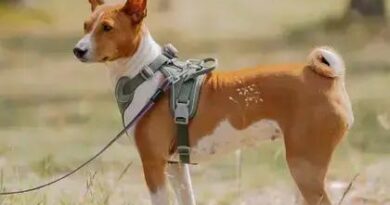O que é Olhar
What is a Dog’s Gaze?
The term “dog’s gaze” refers to the way dogs look at humans and other animals, often conveying a range of emotions and intentions. This gaze can be a powerful form of communication, reflecting feelings of affection, curiosity, or even anxiety. Understanding what a dog’s gaze means can significantly enhance the bond between a dog and its owner, allowing for better training and interaction.
The Science Behind a Dog’s Gaze
Research has shown that when dogs look at humans, they often exhibit a softening of their eyes and a relaxed facial expression. This behavior is linked to the release of oxytocin, the same hormone that fosters bonding in humans. When a dog gazes at its owner, it can create a mutual feeling of love and trust, making it an essential aspect of canine behavior.
Types of Dog Gaze
There are various types of gazes that dogs may exhibit. A direct stare can indicate confidence or assertiveness, while a sideways glance may suggest submission or uncertainty. Additionally, a soft gaze, often accompanied by a relaxed body posture, typically indicates comfort and affection. Recognizing these different types of gazes can help owners interpret their dog’s feelings more accurately.
The Role of Eye Contact in Training
Eye contact plays a crucial role in dog training. When a dog maintains eye contact with its trainer, it demonstrates focus and attentiveness. This connection can be harnessed to reinforce commands and improve obedience. Training sessions that incorporate eye contact can lead to more effective communication and a stronger bond between the dog and its handler.
Understanding Dog Body Language
A dog’s gaze should always be interpreted in conjunction with its body language. For instance, a dog that is staring while its body is tense may be feeling threatened or aggressive. Conversely, a relaxed dog with a soft gaze is likely feeling safe and content. By observing both the gaze and the accompanying body language, owners can gain a comprehensive understanding of their dog’s emotional state.
How to Encourage Positive Gaze
Encouraging a positive gaze from your dog can enhance your relationship. Engaging in activities that promote bonding, such as playtime or training, can lead to more frequent and affectionate gazes. Additionally, rewarding your dog with treats or praise when it looks at you can reinforce this behavior, making it a natural part of your interactions.
Common Misinterpretations of Dog Gaze
It’s essential to avoid misinterpreting a dog’s gaze. For example, a direct stare may be perceived as a challenge, but it can also be a sign of affection or curiosity. Understanding the context and the dog’s overall demeanor is crucial to accurately interpreting its gaze. Misinterpretations can lead to unnecessary stress for both the dog and the owner.
The Impact of Breed on Gaze
Different dog breeds may exhibit varying gazes based on their temperament and personality traits. For instance, herding breeds may have a more intense gaze due to their instinctual drive to control and direct. In contrast, companion breeds may display softer, more affectionate gazes. Understanding these breed-specific tendencies can help owners better interpret their dog’s gaze.
Gaze as a Tool for Emotional Support
A dog’s gaze can serve as a powerful tool for emotional support. Many dog owners report feeling comforted by their dog’s gaze during stressful times. This connection can provide a sense of security and companionship, highlighting the importance of understanding and nurturing the bond between dogs and their humans.



